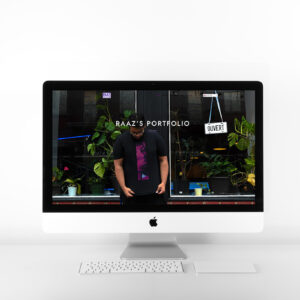
Designing a WordPress website for a portfolio involves a comprehensive UX/UI design process focused on creating an intuitive, visually appealing, and user-friendly platform to showcase your work effectively.
Research and Planning: Begin by defining the purpose and target audience for your portfolio website. Conduct research on competitor portfolios and gather insights into user expectations. Outline the structure, content categories, and desired functionalities for your portfolio.
Selecting WordPress Theme and Plugins: Choose a WordPress theme that aligns with your aesthetic preferences and supports portfolio showcases. Opt for a responsive theme offering customization options. Utilize plugins tailored for portfolios to enhance functionality, such as gallery displays or portfolio grids.
Information Architecture and Wireframing: Plan the website’s layout and navigation. Create a wireframe or sitemap to organize content logically. Define clear pathways for users to explore different portfolio sections easily.
Visual Design and Branding: Customize the WordPress theme to reflect your personal brand or style. Use UI design elements such as color palettes, typography, and imagery to create a cohesive visual identity. Ensure consistency in design across pages for a professional look.
Content Creation and Curation: Gather and organize your best work for the portfolio. Optimize images and multimedia content for web viewing. Craft compelling and concise descriptions or captions for each portfolio piece to provide context and enhance engagement.
User Experience Optimization: Focus on user experience by optimizing site speed, ensuring mobile responsiveness, and implementing intuitive navigation. Test usability to ensure a seamless browsing experience across various devices.
UI Element Integration: Utilize WordPress’s capabilities to incorporate interactive and engaging UI elements. Implement filters, search options, or categories to facilitate easy exploration of your portfolio items.
Prototyping and Testing: Develop a prototype of your WordPress portfolio website to assess functionality and user interactions. Conduct user testing or gather feedback from peers to identify areas for improvement.
SEO Integration and Analytics Setup: Optimize your website for search engines by implementing relevant keywords, meta descriptions, and alt text for images. Set up analytics tools to track website performance and user behavior.
Launch and Maintenance: Once satisfied with the design and functionality, launch your portfolio website. Regularly update content, perform maintenance checks, and continue refining based on user feedback and analytics data.
By following this UX/UI design process, you can create an impactful WordPress portfolio website that effectively showcases your work, engages visitors, and leaves a lasting impression, helping you stand out in your field
